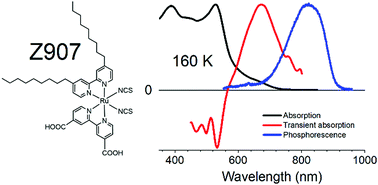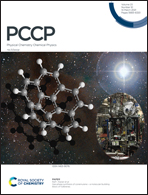Photophysical properties of N719 and Z907 dyes, benchmark sensitizers for dye-sensitized solar cells, at room and low temperature
Abstract
Two benchmark sensitizers used for dye-sensitized solar cells, ruthenium polypyridyl N719 and Z907 dyes were investigated with spectroscopic methods as steady-state absorption, time-gated phosphorescence and femto-/nanosecond time-resolved transient absorption at room temperature and at 160 K. Aim of this study was to perform comprehensive photophysical study of dye excited singlet and triplet metal-to-ligand charge transfer (MLCT) states including states lifetimes, dependency on temperature and dye concentration and obtain detailed information on the excitation decay pathway. Transient absorption and phosphorescence decay data provided a clearer picture of the dynamics of the excited MLCT states. Based on data analysis, the excitation decay pathway consists of rapid intersystem crossing to the triplet MLCT state that undergoes state solvation and vibrational relaxation. It was demonstrated that the lifetime of the fully relaxed triplet MLCT is also strongly dependent on dye concentration for both molecules, providing a viable explanation for a large inconsistency seen in previous studies.



 Please wait while we load your content...
Please wait while we load your content...